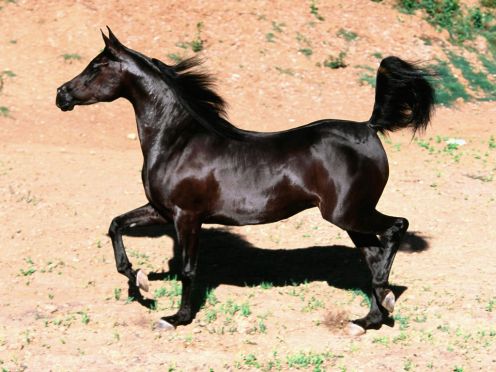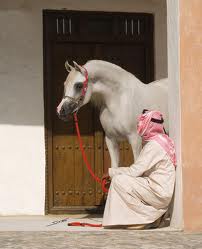|
Arabian
Arabian: The origins of the arab breed are unclear. It is known from many discriptions that the assyrians, the persians, and above all the egyptians of the age of the pharaohs possessed graceful, noble horses with very delicate limbs. There is archaeological evidence of horses that resemble modern Arabs dating back 4,500 years.
Throughout history, Arab horses from the Middle East spread around the world by both war and trade, used to improve other breeds by adding speed, refinement, endurance, and good bone. Arab bloodlines are found in almost every modern breed of riding horse.
Considered the most important horse in the history of the breeding of horses. For many centuries the bedouins of Nedj in the native high country were the sole masters of this marvellous breed. Paying fanatical attention to keeping the bloodline pure, thay place the greatest emphasis on the animals performance and therefore concentrated on stamina, soundness, speed and loyalty.
The breed standard stated by the United States Equestrian Federation, describes Arabians as standing between 14.1 to 15.1 hands tall, with the occasional individual over or under. Thus, all Arabs, regardless of height, are classified as horses, even though 14.2 hands is the traditional cutoff height between a horse and a pony.
|

 Today the arabs incredible energy, intelligence and disposition allow its riders to excel in most equine sports and activities. With the popularity of endurance riding the arab horse spends as much time on the trail as they do at shows and other competive sport events. With a distinctively chiseled head and high tail carriage it is one of the most easily recognizable horse breeds in the world.
Today the arabs incredible energy, intelligence and disposition allow its riders to excel in most equine sports and activities. With the popularity of endurance riding the arab horse spends as much time on the trail as they do at shows and other competive sport events. With a distinctively chiseled head and high tail carriage it is one of the most easily recognizable horse breeds in the world.
